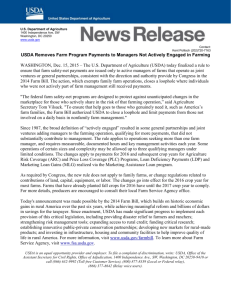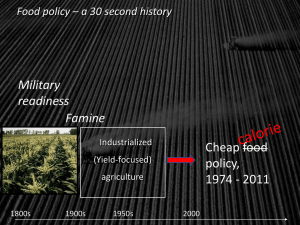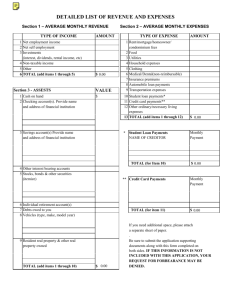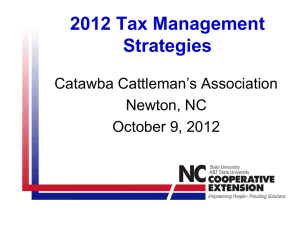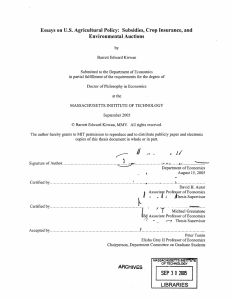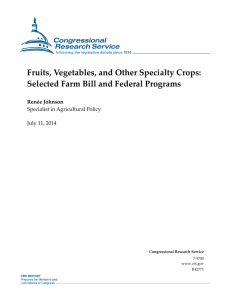Management Calendar
advertisement
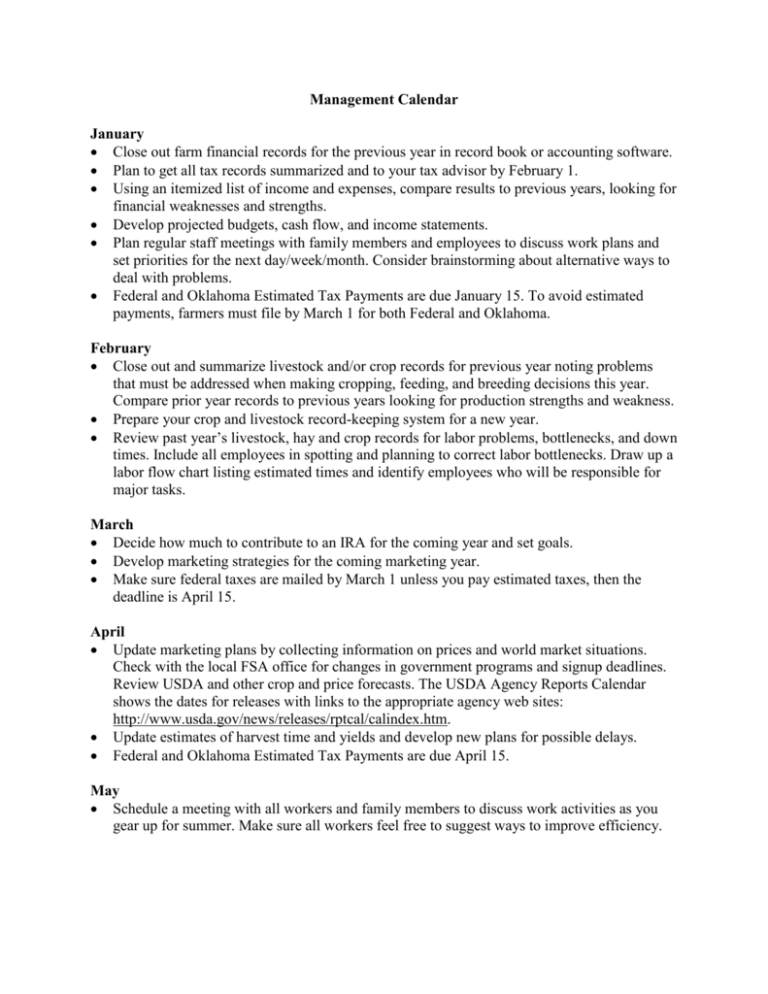
Management Calendar January Close out farm financial records for the previous year in record book or accounting software. Plan to get all tax records summarized and to your tax advisor by February 1. Using an itemized list of income and expenses, compare results to previous years, looking for financial weaknesses and strengths. Develop projected budgets, cash flow, and income statements. Plan regular staff meetings with family members and employees to discuss work plans and set priorities for the next day/week/month. Consider brainstorming about alternative ways to deal with problems. Federal and Oklahoma Estimated Tax Payments are due January 15. To avoid estimated payments, farmers must file by March 1 for both Federal and Oklahoma. February Close out and summarize livestock and/or crop records for previous year noting problems that must be addressed when making cropping, feeding, and breeding decisions this year. Compare prior year records to previous years looking for production strengths and weakness. Prepare your crop and livestock record-keeping system for a new year. Review past year’s livestock, hay and crop records for labor problems, bottlenecks, and down times. Include all employees in spotting and planning to correct labor bottlenecks. Draw up a labor flow chart listing estimated times and identify employees who will be responsible for major tasks. March Decide how much to contribute to an IRA for the coming year and set goals. Develop marketing strategies for the coming marketing year. Make sure federal taxes are mailed by March 1 unless you pay estimated taxes, then the deadline is April 15. April Update marketing plans by collecting information on prices and world market situations. Check with the local FSA office for changes in government programs and signup deadlines. Review USDA and other crop and price forecasts. The USDA Agency Reports Calendar shows the dates for releases with links to the appropriate agency web sites: http://www.usda.gov/news/releases/rptcal/calindex.htm. Update estimates of harvest time and yields and develop new plans for possible delays. Federal and Oklahoma Estimated Tax Payments are due April 15. May Schedule a meeting with all workers and family members to discuss work activities as you gear up for summer. Make sure all workers feel free to suggest ways to improve efficiency. June Keep crop records up-to-date during harvest. Include yields, machine times and equipment used, weed problems, and differences in hybrids. Monitor your line-of-credit and compare it to previous years, watching for large changes. Find up-to-date information on county Loan Deficiency Program (LDP) and Posted County Price (PCP) at the FSA web site: http://www.fsa.usda.gov/dafp/psd/ldp/default.htm Federal and Oklahoma Estimated Tax Payments are due June 15. July A mid-year financial record checkup is in order. Update records. Gauge financial progress by comparing the farm's actual expenses and income to budgeted amounts. Flag any items that are different from budgeted amounts and examine. Cross-reference significant changes in production with expenses. If you did not develop a budget, compare mid-year expenses and income to half the items reported on the previous year’s Schedule F. Actual inflows or outflows that differ from projections may not signal a problem, but understanding why there are differences helps you understand changes in the farm business. Check your credit rating. Independence Day should remind you to free yourself from identify theft and credit mistakes. August Follow-up with your lender to review and update line-of-credit needs. Pay close attention to cash flow needs. Low prices and high input costs will lower cash reserves. Create cash flow reports that assist in managing cash available for debt service, family living, and paying cash expenses. Compare this year's cash flow to the budgeted amount and highlight deviations. Make sure you have a series of possible plans to address any projected cash short falls. September The end of September is the cutoff dates for signing up for wheat crop insurance. Detailed listings of all policy closing dates are listed at http://www.rma.usda.gov/data/sales-closingdates/. Details on crop insurance are best discussed with a local agent: http://www3.rma.usda.gov/apps/agents/. Reward employees, including family members, for jobs well done and for suggestions to lower costs. Make sure that contributions to the operation’s welfare are recognized. Praise and recognition can be a major motivating factor for many employees. Prepare crop record keeping system for a new year. Review year-to-date livestock records and compare them to last year's; look for problems and successes. Federal and Oklahoma Estimated Tax Payments are due September 15. October Using three quarters of cash flow and financial records, estimate total farm expenses, income, and capital purchases and sales. Meet with a tax advisor to plan year-end tax management strategies. Estimate crop insurance payments and any government payments that will appear on this year's taxes. Review changes to state and federal tax laws with a tax advisor to make sure no deductions and/or credits are missed. Keep livestock records up-to-date during weaning and fall sales. At a minimum, include weight, grade, sale prices, and identification numbers of all calves sold and/or purchased. Contact the local FSA office for details and signup procedures for Direct and Countercyclical Program (DCP). Local offices can be found at the following http://oip.usda.gov/scripts/ndisapi.dll/oip_agency/pgSelectByState. November Before the end of the year (if a calendar tax year filer), follow up on tax management strategies recommended by tax advisor. Additional information can be found in IRS publication 225 Farmer's Tax Guide at http://www.irs.gov/pub/irs-pdf/p225.pdf. December Check your financial management plan and make appropriate adjustments before the end of the year. To fully take advantage of year-end tax management strategies, make decisions before December 31. Tax management tools are used to level year-to-year swings in reported income and subsequent taxes paid, lowering total taxes paid. All decisions should be made to improve the long-term survivability and profitability of the businesses. Begin closing out farm books by collecting information for the farm net worth statement. Record number and approximate value of all the farm assets (cattle, tractors, machinery, buildings, inventories of grains and feedstuffs, chemicals, etc.). Review end-of-year bank statements and contact lender(s) for current liability listings. If using cash accounting methods for tax purposes (computerized business records or hand kept), make sure records match the actual deposit and check dates for all claimed income and expenses. Conduct an end-of-the-year inventory of all the farm assets and liabilities to provide data for the farm's net worth statement.

